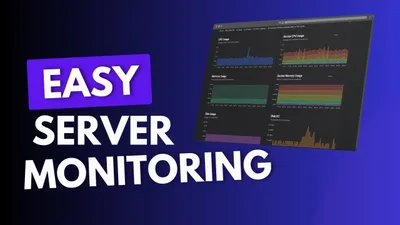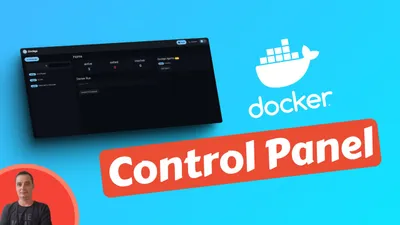How to Self-Host Stirling PDF — Ultimate PDF Manipulation Powerhouse
Learn how to self-host Stirling PDF, a comprehensive PDF manipulation tool with powerful features for merging, splitting, converting, and processing PDFs. Complete guide with Docker, Traefik, and Dokploy setup options.
In our increasingly digital world, PDF documents have become the backbone of professional communication, legal documentation, and information sharing. However, manipulating these files often requires expensive software licenses or relying on questionable online services that compromise your document privacy and security.
Enter Stirling PDF—a revolutionary, self-hosted PDF manipulation powerhouse that transforms how you process, edit, and manage PDF documents. This comprehensive solution eliminates the need for costly software subscriptions while ensuring your sensitive documents never leave your controlled environment.
What is Stirling PDF and How Can It Transform Your Document Workflow?
Stirling PDF is a powerful, open-source web-based application that provides an extensive suite of PDF manipulation tools. Think of it as your personal PDF Swiss Army knife—a comprehensive alternative to expensive commercial software and unreliable online services.
Key Capabilities of Stirling PDF
- Document Management: Merge, split, rotate, and reorganize PDF pages with precision
- Format Conversion: Transform PDFs to/from images, Word documents, Excel files, and more
- Security Operations: Add or remove passwords, digital signatures, and encryption
- Compression & Optimization: Reduce file sizes while maintaining quality
- OCR Integration: Extract text from scanned documents and images
- Metadata Management: Clean, edit, or remove document metadata for privacy
- Batch Processing: Handle multiple documents simultaneously for efficiency
- API Access: Integrate with automation workflows and other applications
How Stirling PDF Works
The architecture of Stirling PDF provides both simplicity and power:
| Component | Function | Benefit |
|---|---|---|
| Web Interface | User-friendly browser-based GUI | Easy access from any device |
| Processing Engine | Java-based PDF manipulation core | Reliable, high-performance operations |
| API Layer | RESTful endpoints for automation | Integration with workflows |
| Storage System | Temporary file handling | Secure document processing |
Stirling PDF is actively maintained as an open-source project. Explore the comprehensive documentation and contribute to the project at their official GitHub repository and visit their project website for detailed feature information.
For a comprehensive list of useful applications, check out our guide on Docker containers for home servers.
Prerequisites
Before deploying your Stirling PDF instance, ensure you have the necessary infrastructure components configured:
Resource Requirements
Stirling PDF performs intensive document processing operations. Adequate system resources ensure optimal performance, especially when handling large files or batch operations.
-
Server Infrastructure: A reliable hosting platform for your Stirling PDF deployment:
- Minimum Specifications: 2 CPU cores, 4GB RAM, 50GB storage
- Recommended Configuration: 4+ CPU cores, 8GB+ RAM, 100GB+ SSD storage
- Cloud Provider: Hetzner VPS offers excellent performance-to-price ratio
- Local Alternative: Mini PC as Home Server for on-premise deployment
-
Reverse Proxy Configuration (for secure HTTPS access):
- Traefik with Docker: Follow our comprehensive guide: How to Use Traefik as A Reverse Proxy in Docker
- Advanced Setup: Implement SSL with our tutorial: Traefik FREE Let’s Encrypt Wildcard Certificate With CloudFlare Provider
-
Container Orchestration Tools:
- Docker Engine: Latest stable release with container runtime
- Docker Compose: Multi-container application management
- Dockge (recommended): Streamlined container management interface - see: Dockge - Portainer Alternative for Docker Management
-
Network Configuration:
- Domain Access: Subdomain pointing to your server (e.g.,
pdf.yourdomain.com) - Firewall Rules: Appropriate port access and security configurations
- Domain Access: Subdomain pointing to your server (e.g.,
Setup Option 1: Docker & Docker Compose (Standalone)
This approach provides a straightforward deployment using Docker containers, ideal for users seeking a simple, self-contained Stirling PDF installation without external dependencies.
Step 1: Create Project Structure
Establish a dedicated directory hierarchy for your Stirling PDF deployment:
mkdir -p ~/stirling-pdf && cd ~/stirling-pdfStep 2: Configure Docker Compose
Create a comprehensive docker-compose.yml file with optimized settings for performance and reliability:
version: '3.8'
services:
stirling-pdf:
image: stirlingtools/stirling-pdf:latest
container_name: stirling-pdf
ports:
- "8080:8080"
volumes:
- ./tessdata:/usr/share/tessdata # OCR language data
- ./configs:/configs # Configuration files
- ./logs:/logs # Application logs
- ./custom-files:/customFiles # Custom templates/files
environment:
- DOCKER_ENABLE_SECURITY=false # Disable for standalone use
- INSTALL_BOOK_AND_ADVANCED_HTML_OPS=true
- LANGS=en_US # Set your preferred language
restart: unless-stopped
healthcheck:
test: ["CMD", "curl", "-f", "http://localhost:8080/api/v1/info/status"]
interval: 30s
timeout: 10s
retries: 3
start_period: 40sStep 3: Initialize Directory Structure
Create the necessary directories for Stirling PDF operation:
mkdir -p tessdata configs logs custom-filesStep 4: Configure OCR Support (Optional)
Download additional language packs for enhanced OCR capabilities:
# Download common language data for Tesseract OCR
wget -P tessdata/ https://github.com/tesseract-ocr/tessdata/raw/main/eng.traineddata
wget -P tessdata/ https://github.com/tesseract-ocr/tessdata/raw/main/fra.traineddata
wget -P tessdata/ https://github.com/tesseract-ocr/tessdata/raw/main/deu.traineddataStep 5: Deploy Stirling PDF
Launch your Stirling PDF instance using Docker Compose:
docker compose up -dStep 6: Verify Installation
Access your Stirling PDF instance and verify functionality:
- Local Access: Navigate to
http://localhost:8080 - Network Access: Visit
http://your-server-ip:8080 - API Documentation: Check
http://localhost:8080/swagger-ui/index.html
Installation Complete
Your Stirling PDF instance is now operational! You can immediately begin processing PDF documents with complete privacy and control.
Setup Option 2: Traefik & Dockge Integration
This professional-grade setup integrates Stirling PDF with Traefik reverse proxy and Dockge management interface, providing HTTPS encryption, automatic SSL certificates, and streamlined administration.
Prerequisites for Advanced Setup
This configuration requires a properly configured Traefik and Dockge environment. Follow our detailed Traefik Wildcard Certificate guide for complete setup instructions.
Step 1: Verify Network Configuration
Ensure your Traefik network is properly configured:
# Verify existing network
docker network ls | grep traefik-net
# Create if necessary
docker network create traefik-netStep 2: Production-Ready Docker Compose
Create an enterprise-grade docker-compose.yml with Traefik integration and enhanced security:
version: '3.8'
networks:
traefik-net:
external: true
services:
stirling-pdf:
image: stirlingtools/stirling-pdf:latest
container_name: stirling-pdf
volumes:
- ./tessdata:/usr/share/tessdata
- ./configs:/configs
- ./logs:/logs
- ./custom-files:/customFiles
environment:
- DOCKER_ENABLE_SECURITY=true # Enhanced security for public access
- INSTALL_BOOK_AND_ADVANCED_HTML_OPS=true
- LANGS=en_US,fr_FR,de_DE # Multiple language support
- SYSTEM_ROOTURIPATH=/ # Root path configuration
- UI_APPNAME=Stirling PDF # Custom application name
- UI_HOMEDESCRIPTION=Your Private PDF Manipulation Suite
- SECURITY_ENABLELOGIN=false # Disable if using external auth
- SYSTEM_MAXFILESIZE=2000 # Max file size in MB
networks:
- traefik-net
restart: unless-stopped
labels:
- "traefik.enable=true"
- "traefik.http.routers.stirling-pdf.rule=Host(`pdf.yourdomain.com`)"
- "traefik.http.routers.stirling-pdf.entrypoints=https"
- "traefik.http.routers.stirling-pdf.tls=true"
- "traefik.http.routers.stirling-pdf.tls.certresolver=letsencrypt"
- "traefik.http.services.stirling-pdf.loadbalancer.server.port=8080"
# Security headers
- "traefik.http.routers.stirling-pdf.middlewares=stirling-pdf-headers"
- "traefik.http.middlewares.stirling-pdf-headers.headers.accesscontrolallowmethods=GET,OPTIONS,PUT,POST,DELETE,PATCH"
- "traefik.http.middlewares.stirling-pdf-headers.headers.accesscontrolmaxage=100"
- "traefik.http.middlewares.stirling-pdf-headers.headers.addvaryheader=true"
healthcheck:
test: ["CMD", "curl", "-f", "http://localhost:8080/api/v1/info/status"]
interval: 30s
timeout: 10s
retries: 3
start_period: 60sStep 3: Deploy via Dockge
- Access Dockge Interface: Navigate to your Dockge dashboard (typically
https://dockge.yourdomain.com) - Create New Stack: Click “New Stack” and name it “stirling-pdf”
- Configure Composition: Paste the Docker Compose configuration
- Customize Settings: Update the domain name in Traefik labels to match your setup
- Deploy Stack: Click deploy and monitor the deployment logs
Step 4: DNS Configuration
Configure your domain’s DNS records to point to your server:
| Record Type | Name | Value | TTL |
|---|---|---|---|
| A | your-server-ip | 300 | |
| CNAME | yourdomain.com | 300 |
Step 5: Verify HTTPS Access
After DNS propagation (typically 5-15 minutes), verify secure access:
- HTTPS Access:
https://pdf.yourdomain.com - SSL Certificate: Verify the Let’s Encrypt certificate is properly installed
- API Documentation:
https://pdf.yourdomain.com/swagger-ui/index.html
DNS Propagation Time
DNS changes may take 5-15 minutes to propagate globally. Be patient before testing your HTTPS access.
Setup Option 3: Dokploy Streamlined Deployment
Dokploy provides the most user-friendly deployment experience with pre-configured templates and automated SSL certificate management. This option is perfect for users who prefer graphical interfaces over command-line operations.
Step 1: Dokploy Platform Setup
If not already installed, set up Dokploy on your server using our comprehensive guide: Dokploy Installation and Configuration Tutorial.
Step 2: Create Stirling PDF Project
- Access Dokploy Dashboard: Navigate to your Dokploy interface
- Create New Project: Click “New Project” and name it “searxng”
- Select Template: Choose “StarlingPDF” from the available templates or create a custom compose application
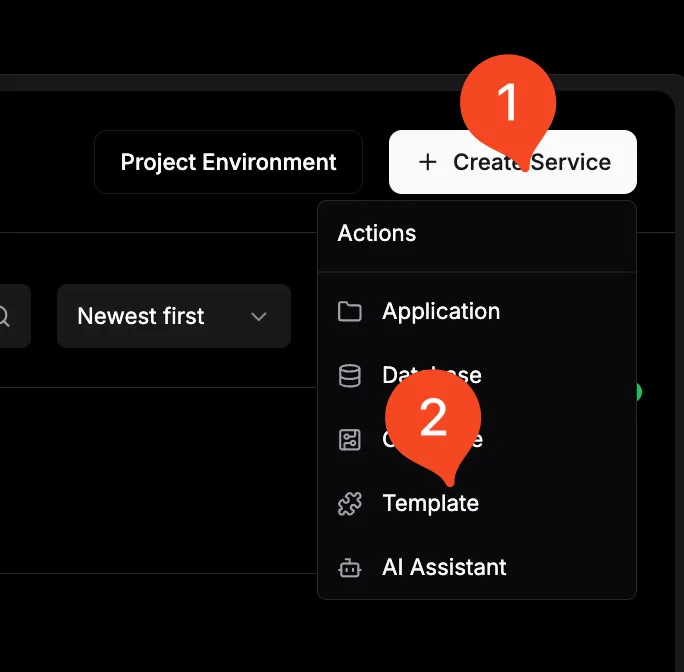
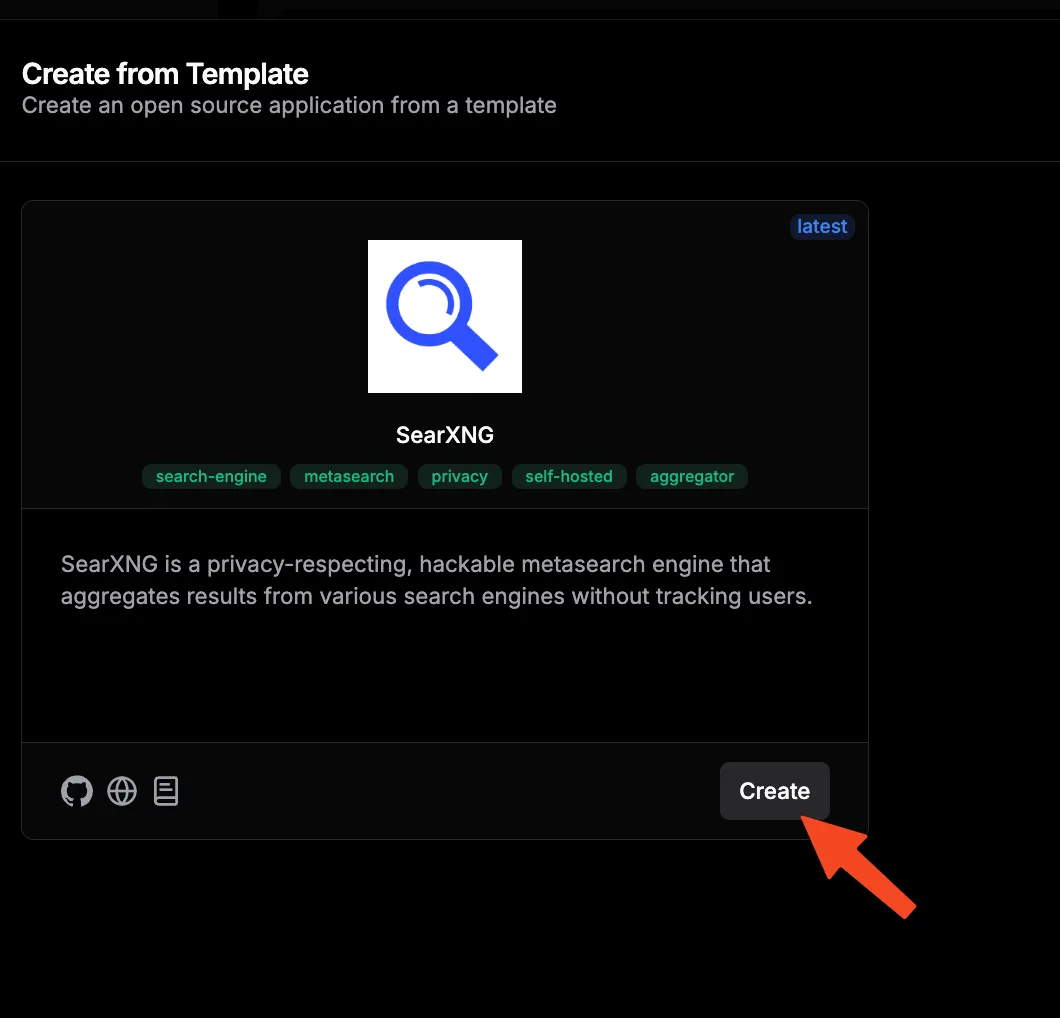
Step 3: Environment Variables Configuration
Configure the following environment variables in Dokploy for optimal performance:
| Variable | Value | Description |
|---|---|---|
DOCKER_ENABLE_SECURITY | true | Enable security features for public access |
INSTALL_BOOK_AND_ADVANCED_HTML_OPS | true | Install additional PDF operations |
LANGS | en_US,fr_FR,de_DE | Supported languages for OCR and UI |
SYSTEM_MAXFILESIZE | 2000 | Maximum file size in MB |
UI_APPNAME | Stirling PDF | Custom application branding |
UI_HOMEDESCRIPTION | Private PDF Suite | Homepage description |
SECURITY_ENABLELOGIN | false | Disable if using external authentication |
Use this them in Dokploy configuration for extra settings:
environment:
- DOCKER_ENABLE_SECURITY=${DOCKER_ENABLE_SECURITY}
- INSTALL_BOOK_AND_ADVANCED_HTML_OPS=${INSTALL_BOOK_AND_ADVANCED_HTML_OPS}
- LANGS=${LANGS}
- SYSTEM_MAXFILESIZE=${SYSTEM_MAXFILESIZE}
- UI_APPNAME=${UI_APPNAME}
- UI_HOMEDESCRIPTION=${UI_HOMEDESCRIPTION}
- SECURITY_ENABLELOGIN=${SECURITY_ENABLELOGIN}
Step 4: Domain and SSL Configuration
- Navigate to Domains: Go to the “Domains” section in your Dokploy project
- Add Domain: Enter your desired domain:
pdf.yourdomain.com - Enable SSL: Toggle SSL/TLS certificate generation
- Configure Auto-Renewal: Enable automatic certificate renewal
- Set Redirects: Configure HTTP to HTTPS redirection
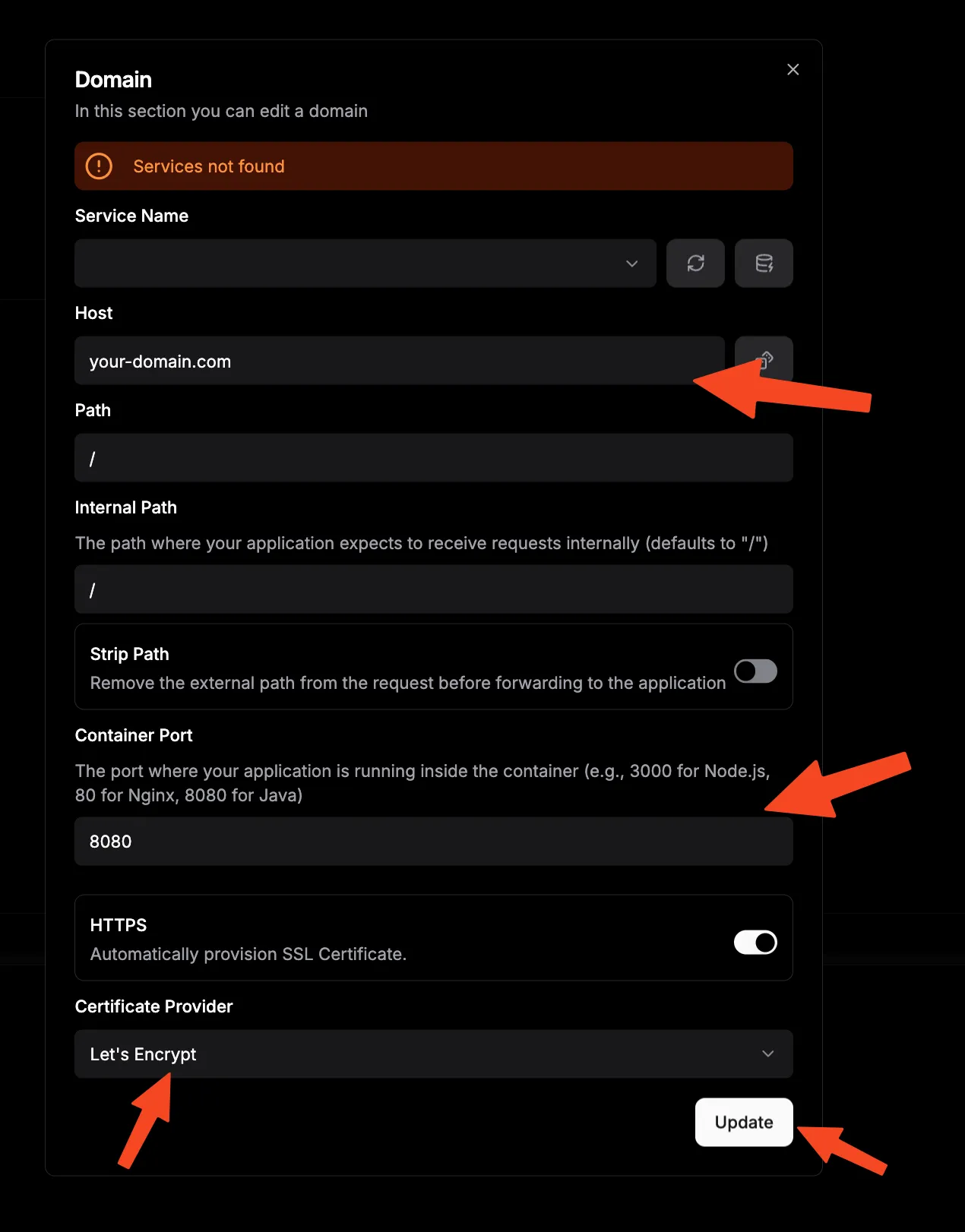
Step 5: Deploy and Monitor
- Deploy Application: Click the “Deploy” button in Dokploy
- Monitor Logs: Watch the deployment process through real-time logs
- Verify Status: Check application health and container status
- Test Functionality: Access your instance and test PDF operations
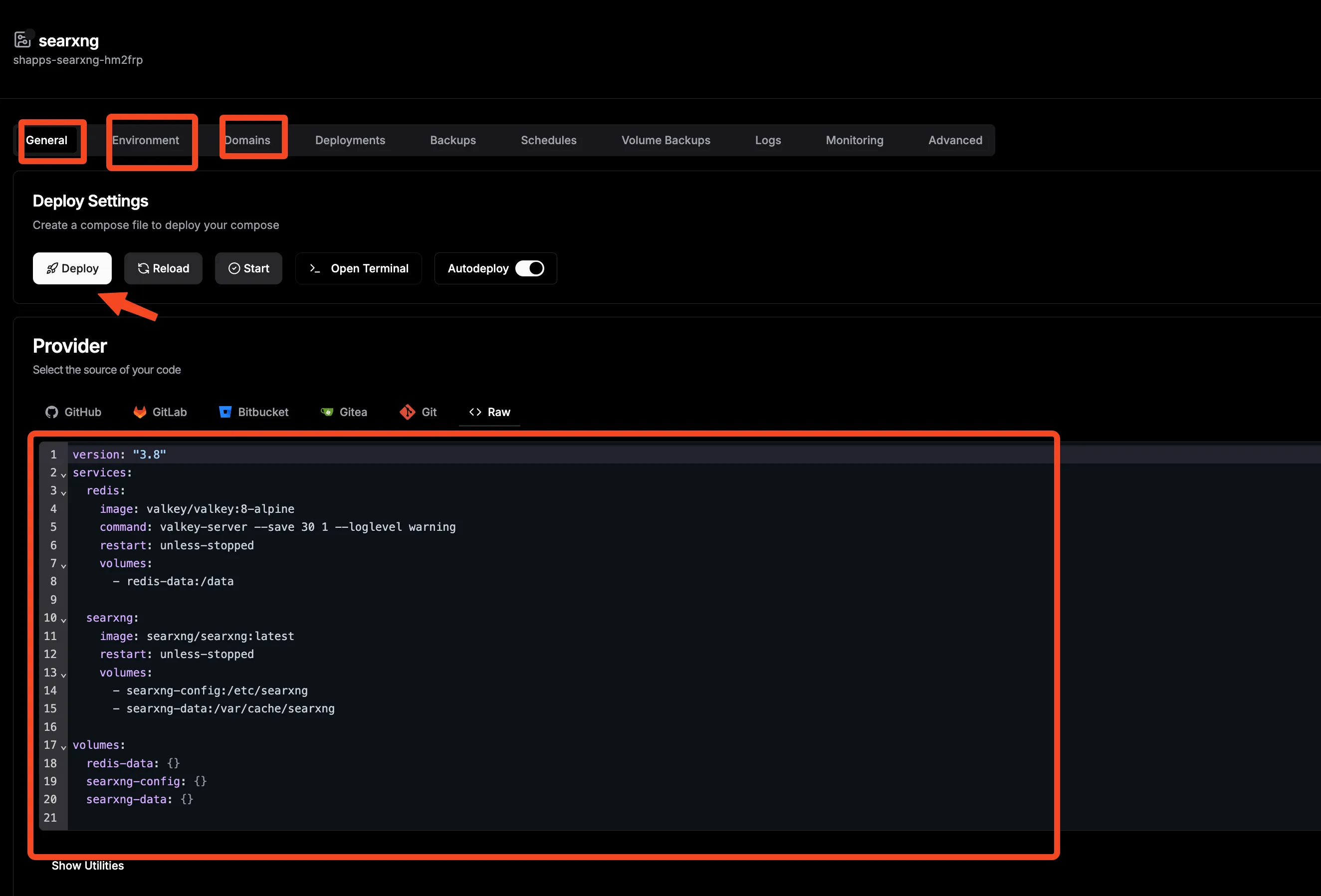
Advanced Configuration and Feature Optimization
Once your Stirling PDF instance is operational, you can enhance its capabilities through various configuration options and feature customizations.
Document Processing Configuration
Customize Stirling PDF’s behavior through environment variables and configuration files:
- File Size Limits: Configure maximum upload sizes based on your server capacity
- OCR Languages: Install additional Tesseract language packs for multi-language support
- Security Settings: Enable authentication, rate limiting, and access controls
- UI Customization: Brand the interface with custom logos and descriptions
- Feature Toggles: Enable or disable specific functionality based on your needs
- Performance Tuning: Adjust memory allocation and processing parameters
OCR and Language Support
Enhance Stirling PDF’s OCR capabilities by installing additional language data:
| Language | Code | Download Command |
|---|---|---|
| English | eng | wget -P tessdata/ https://github.com/tesseract-ocr/tessdata/raw/main/eng.traineddata |
| Spanish | spa | wget -P tessdata/ https://github.com/tesseract-ocr/tessdata/raw/main/spa.traineddata |
| French | fra | wget -P tessdata/ https://github.com/tesseract-ocr/tessdata/raw/main/fra.traineddata |
| German | deu | wget -P tessdata/ https://github.com/tesseract-ocr/tessdata/raw/main/deu.traineddata |
| Chinese Simplified | chi_sim | wget -P tessdata/ https://github.com/tesseract-ocr/tessdata/raw/main/chi_sim.traineddata |
Security and Access Control
Configure comprehensive security measures for production deployments:
environment:
- DOCKER_ENABLE_SECURITY=true
- SECURITY_ENABLELOGIN=true
- SECURITY_LOGINATTEMPTSLIMIT=5
- SECURITY_LOGINRESETTIMEDURATION=120 # minutes
- SYSTEM_ROOTURIPATH=/
- SECURITY_OAUTH2_AUTOCREATEUSER=trueAPI Integration and Automation
Stirling PDF provides a comprehensive REST API for automation and integration:
Common API Endpoints:
- Document Conversion:
/api/v1/convert/pdf-to-img - Security Operations:
/api/v1/security/add-password - Merge Operations:
/api/v1/general/merge-pdfs - Compression:
/api/v1/general/compress-pdf
Example API Usage:
# Convert PDF to images
curl -X POST "https://pdf.yourdomain.com/api/v1/convert/pdf-to-img" \
-H "Content-Type: multipart/form-data" \
-F "[email protected]" \
-F "imageFormat=PNG" \
-F "singleOrMultiple=multiple"Performance Optimization and Resource Management
System Resource Configuration
Optimize Stirling PDF performance based on your server specifications:
| Server Specs | Recommended Settings | Use Case |
|---|---|---|
| 2 CPU / 4GB RAM | SYSTEM_MAXFILESIZE=500 | Light personal use |
| 4 CPU / 8GB RAM | SYSTEM_MAXFILESIZE=1000 | Small team/office |
| 8+ CPU / 16GB+ RAM | SYSTEM_MAXFILESIZE=2000 | Heavy processing/enterprise |
Docker Resource Limits
Configure container resource limits to prevent system overload:
services:
stirling-pdf:
# ... other configuration
deploy:
resources:
limits:
cpus: '2.0'
memory: 4G
reservations:
cpus: '1.0'
memory: 2GMonitoring and Health Checks
Implement comprehensive monitoring for production environments:
healthcheck:
test: ["CMD-SHELL", "curl -f http://localhost:8080/api/v1/info/status || exit 1"]
interval: 30s
timeout: 10s
retries: 3
start_period: 60sIntegration with Workflow Automation
n8n Integration
Connect Stirling PDF with n8n for powerful document processing workflows:
Example Workflow Components:
- Trigger: Email attachment received
- Process: Remove password protection via Stirling PDF API
- Convert: Transform to searchable PDF with OCR
- Store: Save to document management system
API-First Architecture Benefits
- Automated Processing: Integrate with CI/CD pipelines for document automation
- Batch Operations: Process multiple documents programmatically
- Custom Applications: Build specialized tools using Stirling PDF as backend
- Workflow Integration: Connect with tools like n8n, Zapier, or custom scripts
- Monitoring Integration: Track processing metrics and performance
Security Best Practices and Data Protection
Access Control Implementation
Security Considerations
When exposing Stirling PDF to the internet, implement proper security measures to protect sensitive documents and prevent unauthorized access.
Implement multi-layered security for production deployments:
| Security Layer | Implementation | Purpose |
|---|---|---|
| Authentication | Built-in login system | User access control |
| Authorization | Role-based permissions | Feature-specific access |
| Network Security | Reverse proxy + SSL | Encrypted communication |
| Rate Limiting | Request throttling | Prevent abuse |
| File Validation | Content type checking | Malicious file protection |
Data Privacy Measures
- Temporary File Cleanup: Automatic deletion of processed files after operations
- Memory Management: Secure handling of document content in memory
- Log Sanitization: Removal of sensitive information from application logs
- Network Isolation: Container networking restrictions for enhanced security
- Backup Encryption: Encrypted storage of configuration and temporary files
Production Security Configuration
environment:
- DOCKER_ENABLE_SECURITY=true
- SECURITY_ENABLELOGIN=true
- SECURITY_LOGINATTEMPTSLIMIT=5
- SECURITY_LOGINRESETTIMEDURATION=120
- SYSTEM_MAXFILESIZE=1000
- SYSTEM_MAXREQUESTSIZE=1000
- UI_HOMEDESCRIPTION=Secure PDF Processing SuiteTroubleshooting Common Issues
Performance and Memory Issues
Symptoms: Slow processing, out-of-memory errors, or container crashes
Solutions:
- Increase Container Memory: Adjust Docker memory limits
- Optimize File Sizes: Reduce maximum file size limits
- Monitor Resource Usage: Use
docker statsto analyze consumption - Process Queue Management: Implement batch processing for large files
OCR Processing Problems
Symptoms: OCR operations failing or producing poor results
Solutions:
- Verify Language Data: Ensure proper Tesseract language files are installed
- Check Image Quality: Higher resolution images produce better OCR results
- Language Configuration: Verify correct language codes in environment variables
- Memory Allocation: OCR operations require adequate RAM for processing
API Integration Difficulties
Symptoms: API calls failing or returning unexpected results
Solutions:
- Authentication Check: Verify API authentication if enabled
- Content-Type Headers: Ensure correct multipart/form-data headers
- File Size Limits: Check file size restrictions in API calls
- Error Response Analysis: Review detailed error messages from API responses
SSL Certificate Issues
Symptoms: HTTPS errors, certificate warnings, or connection failures
Solutions:
- DNS Verification: Confirm domain points to correct server IP
- Certificate Renewal: Check automatic certificate renewal configuration
- Traefik Logs: Review Traefik logs for certificate generation errors
- Network Connectivity: Verify Let’s Encrypt can reach your server
Debugging Tips
Enable debug logging by setting SYSTEM_LOGFILE=/logs/stirling.log to capture detailed application behavior for troubleshooting.
Maintenance and Updates
Regular Maintenance Tasks
- Weekly: Monitor disk usage and clean temporary files
- Monthly: Update Docker images for security patches and new features
- Quarterly: Review and optimize system performance settings
- Annually: Audit security configurations and access permissions
Update Procedures
Keep your Stirling PDF instance current with regular updates:
# Update Docker images
cd ~/stirling-pdf
docker compose pull
docker compose up -d
# Clean up old images
docker image prune -fBackup Strategies
Protect your Stirling PDF configuration and data:
# Backup configuration and data
tar -czf stirling-pdf-backup-$(date +%Y%m%d).tar.gz \
configs/ tessdata/ custom-files/ docker-compose.yml
# Automated backup script
#!/bin/bash
BACKUP_DIR="/backups/stirling-pdf"
mkdir -p $BACKUP_DIR
tar -czf "$BACKUP_DIR/stirling-pdf-$(date +%Y%m%d-%H%M%S).tar.gz" \
configs/ tessdata/ custom-files/ docker-compose.ymlConclusion
Self-hosting Stirling PDF represents a significant advancement in document processing independence and security. By implementing your own PDF manipulation suite, you achieve:
- Complete Data Control: Your sensitive documents never leave your infrastructure
- Cost-Effective Solution: Eliminate expensive software licenses and subscription fees
- Unlimited Processing: No file size restrictions or usage limits imposed by third parties
- Custom Integration: API-first architecture enables seamless workflow automation
- Enhanced Security: Multi-layered security controls protect your document processing
- Scalable Performance: Adjust resources based on your specific processing needs
Whether you choose the straightforward Docker deployment, the robust Traefik integration, or the streamlined Dokploy approach, Stirling PDF provides a powerful foundation for private, efficient document processing. The investment in self-hosting delivers immediate benefits in privacy protection, cost savings, and processing flexibility.
As document security and privacy become increasingly critical in professional environments, tools like Stirling PDF demonstrate that you can maintain full control without sacrificing functionality or convenience. Transform your document workflow today and experience the freedom of truly private PDF processing.
Start Your Stirling PDF JourneyReady to expand your self-hosted infrastructure? Explore our comprehensive guides on Docker container orchestration, Traefik reverse proxy configuration, and Dokploy platform management to
